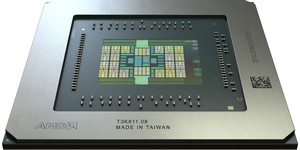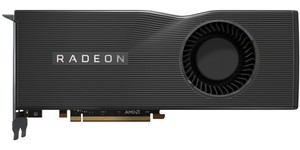
AMD has announced a new Radeon Software Adrenalin Edition driver bundle which brings, along with a range of bug fixes, extended support for the Vulkan application programming interface (API) to enhance high dynamic range (HDR) support.
Announced back in March 2015 as the outcome of the Khronos Group's GLnext initiative, the Vulkan application programming interface (API) aims to reduce driver overhead and improve performance on both low- and high-end systems relative to OpenGL and rival APIs. Formally launched in February 2016, Vulkan is now supported by recent graphics processors from all major vendors - and even on Apple devices thanks to the MoltenVK driver. While it's now well into its third year as a fully-fledged standard, though, new features are still landing all the time - including some for improved high dynamic range (HDR) support, added by AMD in its latest driver release.
Dubbed the Radeon Software Adrenalin 2019 Edition 19.6.2 release, AMD's latest graphics driver bundle adds two new new Vulkan extensions: VK_EXT_full_screen_exclusive, for providing applications with explicit control over exclusive full-screen display modes; and VK_AMD_display_native_hdr, which allows Vulkan-based applications to make use of FreeSync2 features for improved HDR support. Another three extensions, not HDR-related, have also been added to the driver: VK_EXT_host_query_reset, which allows the host rather than the GPU to issue reset requests for outstanding queries; VK_EXT-separate_stencil_usage, which allows an application to restrict or expand the stencil aspect of an image relative to the depth aspect; and VK_KHR_uniform_buffer_standard_layout, which the company claims offers a more flexible alignment for uniform buffers and allows for std430 interface block layouts to be used.
The update also brings with it a handful of bug fixes, including solutions for incompatibilities between the Performance Metrics Overlay feature and selected games, performance drops on wireless virtual reality (VR) headsets with Radeon RX 500-series graphics processors, a crash when exiting selected DirectX 12 applications with cloned multiple displays, a crash in the Microsoft PIX tool, and hanging in Crackdown 3 on Radeon R7 370-series graphics processors.
Those looking to upgrade, though, should be aware of the bundle's known issue list: The Radeon ReLive footage capture system no longer allows for streaming and upload to Facebook for reasons not disclosed; the Asus TUF Gaming FX505 laptop can have its discrete GPU disappear while idle; those running an AMD Radeon VII graphics card may find inaccurate readings from the Performance Metrics Overlay and WattMan tools; the Ryzen-based Acer Swift 3 may 'experience system instability' if the driver bundle is installed using the Custom Clean Installation option; and some Ryzen-based accelerated processing unit (APU) models fail to allow the graphics driver to uninstall fully when using the Express Uninstall option.
For those looking to upgrade, full details and links to download the driver bundle can be found on AMD's website.

MSI MPG Velox 100R Chassis Review
October 14 2021 | 15:04








Want to comment? Please log in.